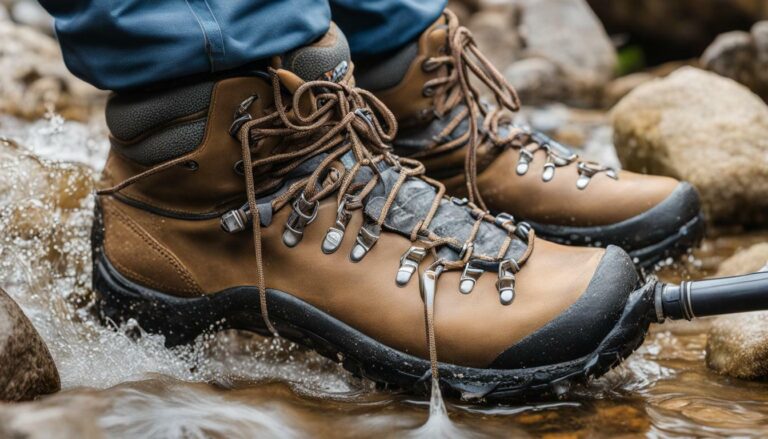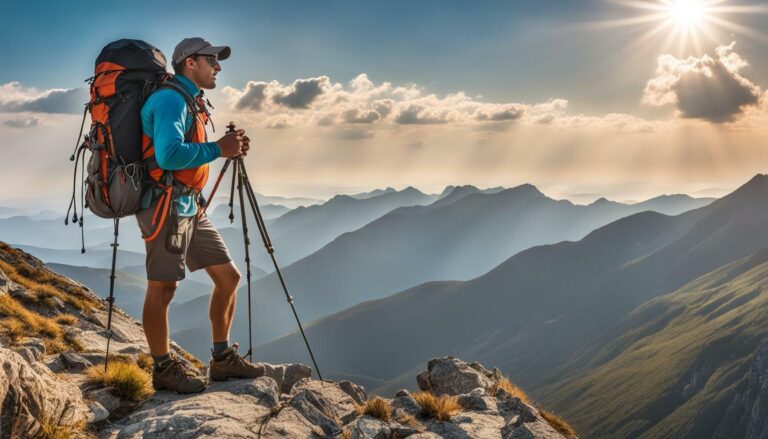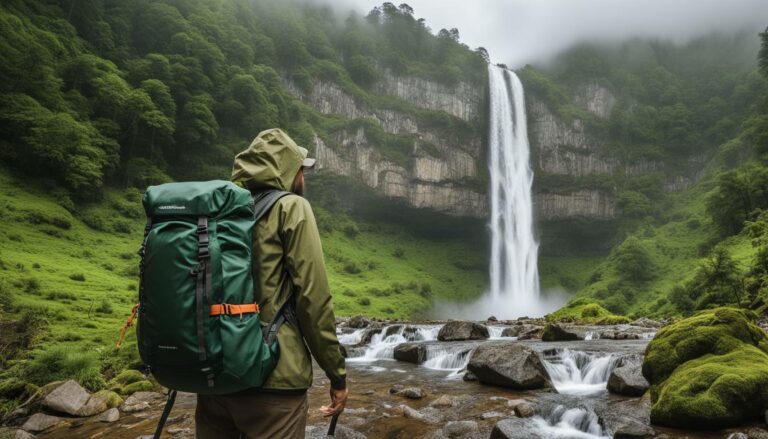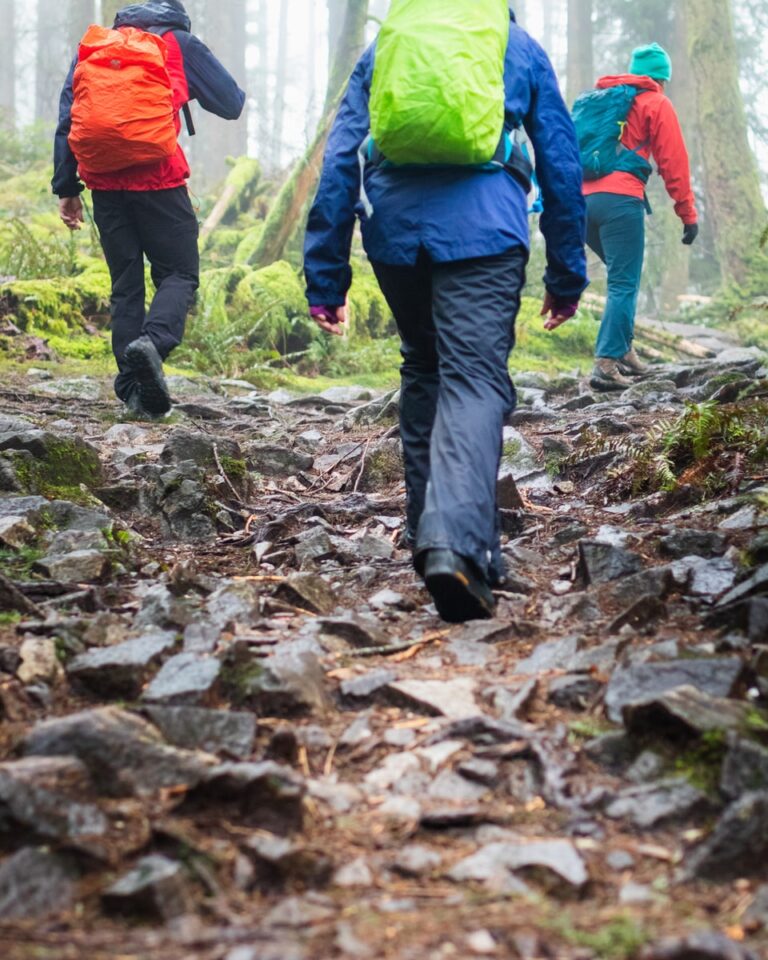Essential Guide to Must-Have Hiking Gear for Advanced Hikers
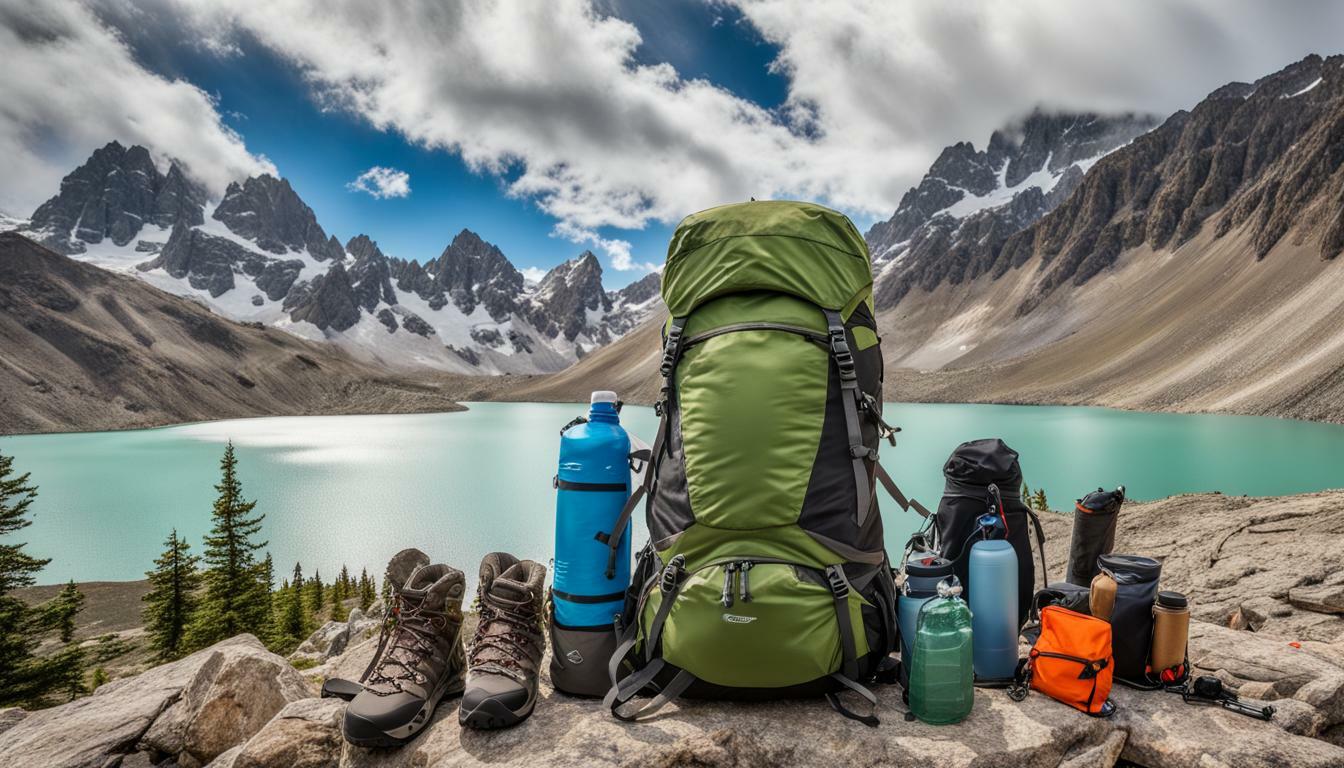
If you’re an advanced hiker, you know that having the right gear can make a world of difference when it comes to tackling challenging trails. Whether you’re planning a multi-day backpacking trip or a day hike on technical terrain, having the must-have hiking gear is essential to your comfort and safety.
In this guide, we’ll provide you with a comprehensive list of must-have hiking gear for advanced hikers. From hiking footwear to navigation tools, we’ve got you covered. We’ll also provide you with key tips and recommendations to ensure that you have the best possible hiking experience.
Get ready to elevate your hiking game with our expert recommendations for must-have hiking gear for advanced hikers.
Key Takeaways:
- Must-have hiking gear is essential for advanced hikers.
- Hiking footwear, clothing, backpacks, navigation tools, safety gear, hydration and nutrition, seasonal gear, accessories, and maintenance and care are key categories to consider when selecting hiking gear.
- Proper gear selection and preparation can enhance your hiking experience and keep you safe on the trails.
Choosing the Right Footwear for Advanced Hiking
When it comes to advanced hiking, having the right footwear is crucial. The terrain can be challenging, and your feet will be doing a lot of work. It’s important to choose hiking boots or trail shoes that offer support, durability, and traction.
Hiking boots are the most popular choice for advanced hikers. They offer ankle support, a sturdy sole, and protection from rocks and debris. If you’re going on a longer hike or carrying a heavy pack, hiking boots are a good choice. Trail shoes, on the other hand, are lighter and more flexible. They offer less ankle support but are more breathable and comfortable for shorter hikes or less rugged terrain.
If you prefer something even lighter, hiking sandals can be a great choice for advanced hiking in warm weather. Look for sandals with good traction, a secure fit, and a durable sole.
Regardless of what type of footwear you choose, trekking poles can be a valuable asset for advanced hiking. They provide stability and support on steep inclines and uneven terrain, reducing the strain on your legs and feet.
Choosing the Right Hiking Boots
When selecting hiking boots for advanced hiking, consider the following:
| Feature | What to Look For |
|---|---|
| Support | Look for boots with ankle support, a sturdy sole, and a secure fit. |
| Traction | Choose boots with a good tread for traction on various terrains. |
| Waterproofing | For wet weather, look for boots with a waterproof and breathable membrane. |
| Materials | Leather boots are durable, while synthetic materials are lightweight and breathable. |
Choosing the Right Trail Shoes
When selecting trail shoes for advanced hiking, consider the following:
| Feature | What to Look For |
|---|---|
| Comfort | Choose shoes with a comfortable and breathable upper and a cushioned sole. |
| Traction | Look for shoes with a good tread for traction on various terrains. |
| Materials | Choose synthetic materials for durability and breathability. |
Choosing the Right Hiking Sandals
When selecting hiking sandals for advanced hiking, consider the following:
| Feature | What to Look For |
|---|---|
| Support | Look for sandals with a secure fit and good arch support. |
| Traction | Choose sandals with a good tread for traction on various terrains. |
| Materials | Look for durable and quick-drying materials. |
Remember, the right footwear can make or break your advanced hiking experience. Choose wisely and invest in quality hiking boots, trail shoes, or sandals. And don’t forget your trekking poles for added stability and support.
Clothing Essentials for Advanced Hiking
Advanced hikers need the right clothing to handle various weather conditions and terrains. When it comes to hiking clothing, there are a few essential factors to consider – moisture-wicking, layering system, and key clothing items like waterproof jackets and hiking pants.
Moisture-wicking: This is a crucial factor for any hiker, as it helps regulate your body temperature, keeping you warm in colder weather and cool in warmer weather. Moisture-wicking fabrics keep sweat away from your skin, preventing chafing and discomfort. Look for fabrics like merino wool or synthetic fibers like polyester, which are both excellent moisture-wicking options.
Layering system: Building a layering system is vital for advanced hikers, as it allows you to regulate your body temperature effectively. Your layering system should consist of a base layer (moisture-wicking), a mid-layer (insulating), and an outer layer (protective). By layering up or down, you can stay comfortable in any weather conditions.
Waterproof jacket: A waterproof jacket is a must-have for any hiker, as it protects you from wind, rain, and other elements. Look for jackets made from high-quality waterproof materials like Gore-Tex or eVent. Pay attention to features like hood size and adjustability, pocket placements, and ventilation for added comfort during your hike.
Hiking pants: Hiking pants provide extra protection and comfort on the trails. Look for pants made from durable, water-resistant materials like nylon or polyester. Consider features like pockets, adjustable waistbands, and ventilation options.
With the right hiking clothing, you can tackle any trail with confidence and comfort.
Backpacks and Daypacks for Advanced Hiking
Carrying the right backpack or daypack is essential for advanced hiking. With so many options available, it’s important to consider factors such as capacity, suspension system, and features like a hydration bladder.
Hiking backpacks come in various sizes, typically ranging from 30 to 80 liters. For advanced hiking, a backpack with at least 50 liters of capacity is recommended. Look for a backpack with a good suspension system that distributes the weight of your gear comfortably across your back and hips. This will help reduce fatigue on longer hikes and challenging terrain.
Daypacks are smaller and lighter than backpacks, designed for shorter hikes or as an extra pack. They can range from 10 to 35 liters in capacity, depending on your needs. When selecting a daypack, consider features such as padded shoulder straps and a breathable back panel for maximum comfort, as well as external pockets for easy access to gear.
A hydration bladder is an essential feature for any backpack or daypack. This allows you to carry a large amount of water and stay hydrated on the go, without needing to stop and take off your backpack. Look for a backpack that has a dedicated compartment for the bladder to prevent leaks and keep it separate from other gear.
| Hiking Backpacks | Daypacks |
|---|---|
| – Capacity of at least 50 liters – Good suspension system – Hydration bladder compartment |
– Range from 10 to 35 liters – Padded shoulder straps – Breathable back panel – External pockets |
Remember to properly adjust your backpack or daypack to fit your body, ensuring maximum comfort and support. With the right backpack or daypack, you can focus on the adventure ahead and tackle the trails with confidence.
Navigation tools are essential for advanced hiking, especially when venturing off the beaten path. With the right navigational equipment, you’ll be able to stay on track and navigate with confidence.
GPS Devices
GPS devices are incredibly useful for hikers, providing accurate information on location, elevation, and distance traveled. They can also help you track your route and set waypoints for future reference. There are many different types of GPS devices available, from handheld units to those integrated into watches or smartphones. Consider factors such as battery life, durability, and ease of use when selecting a device.
Compass and Topographic Maps
While GPS devices are helpful, they should not be relied on solely. A compass and topographic maps can provide valuable backup information and help you navigate if your GPS fails or loses signal. A compass can also help you orient yourself and determine your direction of travel. Topographic maps provide a detailed view of the terrain and can assist with route planning.
Altimeter
An altimeter is a device that measures altitude using air pressure. It can help you track vertical progress and determine your current elevation. This can be particularly useful when hiking in mountainous terrain or when navigating unfamiliar paths.
Quick Summary
When it comes to navigation tools for advanced hiking, GPS devices, a compass and topographic maps, and an altimeter are must-have items. These tools can help you stay on track and navigate with confidence, even in remote or challenging terrain.
Essential Gear for Safety and Emergency Situations
While advanced hiking can be a thrilling experience, it’s crucial to prioritize safety. In case of unexpected situations like injuries or inclement weather, having the right safety gear and emergency equipment can be a lifesaver. Here are some essential safety gear items for advanced hikers:
- First aid kit: A comprehensive first aid kit should include items like bandages, antiseptic wipes, pain relievers, and more. Customize your kit to your specific needs and the length of your hike.
- Emergency shelter: In the case of unexpected weather changes, a lightweight emergency shelter can provide temporary protection from the elements.
- Headlamp: A headlamp is a must-have for advanced hikers, especially for those planning to hike during dawn or dusk. Ensure your batteries are fresh to avoid getting lost in the dark.
It’s important to remember that just carrying these items is not enough. You must know how to use them when the need arises. It is recommended to take a first aid course and learn the necessary survival skills to ensure your safety.
Hydration and Nutrition for Advanced Hikers
Staying hydrated and properly nourished is crucial for advanced hikes. Planning ahead and packing the right supplies can make all the difference in your hiking experience.
Hydration
Hydration is key during any hike, but it becomes even more critical during advanced hikes. Dehydration can lead to fatigue, cramps, headaches, and even serious medical conditions.
A hydration reservoir is a must-have item for advanced hikers. These systems allow you to carry large amounts of water without the extra weight of water bottles. Look for a system with a capacity of at least two liters. You can also consider water filtration systems that allow you to refill your reservoir along the way.
Nutrition
When it comes to nutrition, it’s important to pack hiking snacks and energy bars that are both lightweight and nutrient-dense.
Hiking snacks like trail mix, jerky, and dried fruit are ideal choices. They provide essential carbohydrates and protein while being easy to pack and store. Energy bars are another great option, offering a quick and convenient source of energy during hikes.
Remember to also pack extra food and snacks in case of unexpected delays or emergencies. And don’t forget to properly dispose of any food waste to avoid damaging the environment or attracting wildlife.
Advanced Hiking Gear for Different Seasons
As an advanced hiker, you know that different seasons require different gear. Here are some essential items to consider for each season:
Winter Hiking
Winter hiking requires gear that can handle the cold and snow. Make sure to bring:
| Item | Description |
|---|---|
| Insulated hiking boots | Keep your feet warm and dry in the snow. |
| Microspikes or crampons | Provide traction on icy trails. |
| Warm layers | Dress in layers to regulate your body temperature. |
Summer Hiking
Summer hiking requires gear that can handle the heat and sun. Make sure to bring:
| Item | Description |
|---|---|
| Breathable hiking boots or shoes | Keep your feet cool and dry in the heat. |
| Sun protection | Wear sunscreen, a hat, and sunglasses to protect yourself from the sun. |
| Lightweight clothing | Dress in lightweight, moisture-wicking fabrics to stay cool. |
Hiking in Rain
When hiking in the rain, it’s important to stay dry and prevent hypothermia. Make sure to bring:
| Item | Description |
|---|---|
| Waterproof jacket and pants | Keep rain off of your body. |
| Waterproof hiking boots | Keep your feet dry and prevent blisters. |
| Gaiters | Prevents water from entering your boots. |
Hiking in Snow
Hiking in deep snow requires gear that can provide traction and support. Make sure to bring:
| Item | Description |
|---|---|
| Snowshoes | Distribute your weight in deep snow. |
| Insulated hiking boots | Keep your feet warm and dry in the snow. |
| Trekking poles | Provide stability and support when walking in the snow. |
With the right seasonal hiking gear, you can enjoy year-round hiking adventures. Always check the weather forecast and plan your gear accordingly.
Maintenance and Care for Hiking Gear
Proper maintenance and care of your hiking gear can go a long way in ensuring its longevity and optimal performance. Here are some tips to keep your gear in top condition:
Gear Maintenance
Regularly clean and dry your gear after every hike. This includes your hiking boots, backpack, and any clothing items. Use a soft-bristled brush to remove any dirt or debris from the boots and always follow the manufacturer’s cleaning instructions.
Inspect your gear before and after every use. Check for any signs of wear and tear, such as loose stitching or tears. Address these issues promptly to avoid any further damage.
Gear Care
Store your gear in a cool and dry place, away from direct sunlight. Avoid storing it in damp areas, as this can promote mold and mildew growth.
Always follow the manufacturer’s guidelines for care and maintenance of your gear. This can include machine-washing instructions for clothing items or specific cleaning agents for backpacks and tents.
Cleaning Hiking Boots
After every hike, clean your hiking boots with a soft-bristled brush and lukewarm water. Avoid using harsh detergents or soaps that can damage the material or strip away any waterproofing.
Allow your boots to air dry, away from direct heat. Stuff them with newspaper to help them maintain their shape and absorb any moisture.
Gear Storage
Store your gear in a way that maximizes its lifespan. Hang up your backpack instead of stuffing it in a corner to avoid compressing the padding and damaging the zippers. Use gear lofts and hangers to keep clothing items neat and organized.
Gear Repair
Perform regular checks on your gear and address any repairs as soon as possible. This will prevent any small issues from escalating into more significant problems and prolong the life of your gear.
Overall, taking the time to maintain and care for your hiking gear will ensure it performs optimally and lasts for many more adventures to come.
Hiking Accessories for Advanced Hikers
In addition to the essential gear, there are various hiking accessories that can enhance your advanced hiking experience. These include:
- Hiking Poles: Also known as trekking poles, they provide added stability and support on steep terrain. Look for lightweight and adjustable poles with comfortable grips.
- Gaiters: These are sleeve-like covers that fit over your boots, providing protection from debris, mud, and water. They come in different lengths and materials to suit different terrains.
- Sun Protection: Sunscreen, sunglasses, and hats are crucial for protecting your skin and eyes from harmful UV rays during long hikes.
- Insect Repellent: Keep bugs at bay with insect repellent sprays or lotions. Some hikers also swear by bug nets or clothing with built-in insect repellent properties.
Investing in these accessories can make a huge difference in your comfort and overall experience on the trails. Always consider the terrain and weather conditions when choosing accessories to bring along.
Must-Have Hiking Gear for Advanced Hikers – A Summary
Congratulations, you’re now an expert on the must-have hiking gear for advanced hikers! You’ve learned about the importance of choosing the right footwear, clothing, backpacks, and navigation tools for tackling challenging trails. We’ve also covered essential safety gear and emergency equipment, hydration and nutrition considerations, and the benefits of hiking accessories.
Remember to evaluate your specific needs and the terrain and season you’ll be hiking in while choosing your equipment. Don’t forget the importance of maintaining and caring for your gear to guarantee optimal performance on future hikes.
With the right equipment and preparation, you’ll be able to conquer any trail with confidence and enjoy unforgettable hiking experiences. Keep hiking essentials like these in mind, and we wish you all the best on your advanced hiking adventures!
FAQ
Q: What are the must-have hiking gear for advanced hikers?
A: The must-have hiking gear for advanced hikers include hiking boots or trail shoes, moisture-wicking clothing, a backpack or daypack, navigation tools like a compass or GPS device, safety gear such as a first aid kit and headlamp, hydration options like a water filtration system or hydration reservoir, and season-specific gear for winter or summer hiking.
Q: What type of footwear should I choose for advanced hiking?
A: For advanced hiking, it’s recommended to choose sturdy hiking boots or trail shoes that provide ankle support and traction on various terrains. Some hikers also opt for hiking sandals for warm weather or water crossings. Additionally, using trekking poles can offer stability and support.
Q: What clothing is essential for advanced hiking?
A: Essential clothing for advanced hiking includes moisture-wicking base layers, a breathable and waterproof jacket, hiking pants, and layering options for changing weather conditions. It’s important to choose clothing that allows for movement, protects from the elements, and helps regulate body temperature.
Q: What should I consider when choosing a backpack for advanced hiking?
A: When choosing a backpack for advanced hiking, consider factors such as capacity to carry all necessary gear, a comfortable suspension system for weight distribution, and features like hydration bladder compatibility. It’s important to select a backpack that fits well and allows for easy access to essentials on the trail.
A: For advanced hiking, it’s recommended to have reliable navigation tools such as a GPS device, compass, topographic maps, and altimeter. These tools will help you navigate unfamiliar terrain, stay on track, and ensure a safe hiking experience.
Q: What safety gear and emergency equipment should I carry for advanced hiking?
A: Essential safety gear for advanced hiking includes a well-stocked first aid kit, emergency shelter like a lightweight tent or bivy sack, and a headlamp for emergencies or hiking in low light conditions. It’s important to be prepared for unexpected situations and prioritize safety on the trails.
Q: How can I stay hydrated and properly nourished during advanced hikes?
A: To stay hydrated during advanced hikes, consider using a water filtration system or carrying a hydration reservoir. It’s also important to pack hiking snacks and energy bars that provide quick and sustained energy to fuel your body during long and strenuous hikes.
Q: What gear should I have for different seasons of advanced hiking?
A: Different seasons require specific gear for advanced hiking. In winter, essential gear may include insulated clothing, crampons, and an ice axe. For summer hiking, lightweight and breathable clothing, sun protection gear, and extra hydration are crucial. Rain or snow hiking may require waterproof gear and additional layers for protection from the elements.
Q: How can I maintain and care for my hiking gear?
A: Proper maintenance and care of your hiking gear is important for its longevity and performance. Regularly clean your hiking boots, store gear correctly to prevent damage, and perform basic repairs when needed. Taking care of your gear ensures it’s always ready for your next advanced hiking adventure.
Q: What accessories can enhance my advanced hiking experience?
A: In addition to essential gear, there are various accessories that can enhance your advanced hiking experience. Hiking poles provide extra stability and support, gaiters protect against debris, sun protection gear shields from harmful UV rays, and insect repellent keeps bugs at bay. These accessories can improve comfort and safety during your hikes.
Q: What is the summary of must-have hiking gear for advanced hikers?
A: Armed with the knowledge from this guide, you can confidently choose the must-have hiking gear for advanced hikers. Remember to consider your specific needs, the terrain you’ll be tackling, and the season you’ll be hiking in. With the right equipment, you’ll be well-prepared to conquer challenging trails and enjoy unforgettable hiking experiences.

